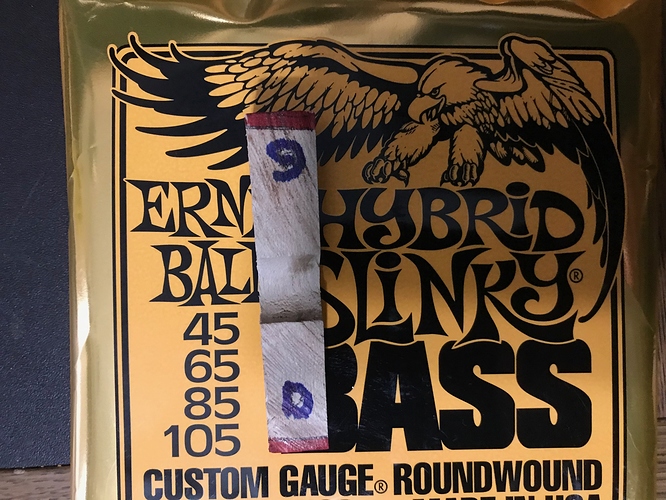I have struggled to get my string height adjustments to my liking on nearly every one of the basses that have passed through my hands or that are in my collection. I can get close but my eyes and the straight edge I use just can’t seem to stay consistent.
On Wednesday I received a Squire Vintage Modified 70’s P bass from a Reverb buy. In the pictures the seller had some very good bass equipment in the background. So I figured that he had to be pretty knowledgeable. Right out of the box after being tuned, it was exactly perfect, imo, for string height for me.
Yesterday the BGO hit me when I was in the shop. ( BGO= blinding glimpse of the obvious) when I saw a piece of scrap wood from a bass build. BGO= build a template and mark it exactly to the 70’s P bass heights…
Pictured is my rough template and it worked like a charm! I took a fine tip black sharpie and marked exactly the height of each string where the neck met the body on each string. Then I took a red sharpie and marked the area below the back line.
I then checked the other basses in my collection. The only one that was perfect came as a set up from Sweetwater. The others all needed tweaks on usually the E or A strings. It also helped me find a high fret on a G string that had alluded me for some time.
Another BGO for you. Raise your playing stool as high as it will go. Place the guitar on the top of the stool as you sit in another chair to make the adjustments. The raised height of the stool made a big difference for me.
Your mileage may vary. My collection is mostly Fenders with one Ibanez. It worked the same for all of them.
Rock On!
